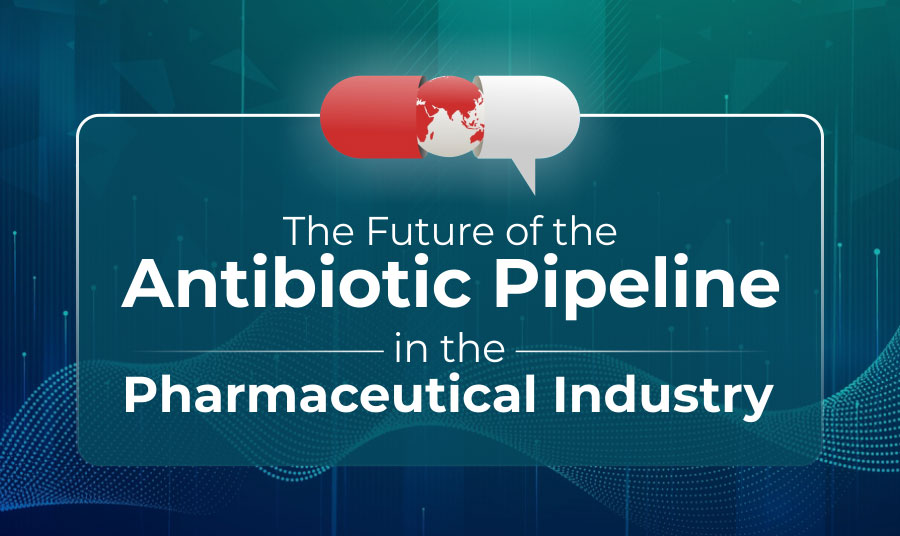There is a focus on the future of antibiotics because antibiotic resistance is on the rise. The 2019 Antibiotic Resistance Threats Report highlights this urgency. As stated, antibiotic-resistant infections cross over 2.8 million people in the US per year and over 3,35,500 deaths per year. For a long time, it has been clear that there is a need to develop a strong and diverse pipeline for antibiotic production. This blog considers how the antibiotic pipeline currently looks, the problems that it confronts, and the strategies that are being tried to respond to them.
From where we stand now – The Current State of the Antibiotic Pipeline
Thus, antibiotic pipelines are worrying. That is why the era of new antibiotics is closing at the same time as the demand for newly developed antibiotics is constantly growing. This is mainly attributed to raw material costs and the lengthy time taken to research new antibiotics. Further, the payoff for antibiotics is relatively low, which is one reason why few pharmaceutical firms are willing to fund research into new antibiotics. The Pew Charitable Trust says there are 41 antibiotics in clinical stages of development, compared to over 1500 cancer drugs. This simple comparison draws attention to one of the most critical peculiarities that the antibiotic market is faced with – the difficulty of economic returns on the one hand and the complexity of the actual science behind the creation of the respective product on the other.
Antibacterial agents: current challenges to the antibiotic pipeline
Some challenges limit the discovery of new antibiotics. In scientific terms, it is much more challenging to identify new antibiotics based on existing resources since bacteria develop mechanisms that enable them to resist known drugs. Another reason why it is challenging to discover a solution to bacterial infection is that a single bacteria may cause many types of diseases, or a disease may have multiple causes.
Economically, antibiotics are usually 5-7 day treatments with little market compared to drugs for conditions like diabetes. This economic reality reduces incentives for investment in antibiotic research. The suggested measures include the implementation of new economic incentives such as market entry rewards and switching to subscription-based models for antibiotics development, which can be attractive for pharmaceutics and have a stimulating effect on scientists.
Innovative Approaches in Antibiotic Development
There is a need to restock the antibiotic pipeline, as mentioned previously, and the only way possible is through innovation. AI and machine learning are beginning to establish themselves as assets in the improvement of antibiotic discovery. The success of drug discovery can be accelerated by employing various Big Data techniques in which AI plays an important role. As an example, AI has been used to design a ‘blind library’ that has convenient new molecules that are potent against drug-resistant bacteria.
Another hope-chaser is antimicrobial peptides and bacteriophages, which are types of viruses that attack bacteria. AMPs are proteins that penetrate and destroy bacteria’s cell membranes, while BPs are viruses that are selective against bacterial cells. These provide a potential alternative to classic antibiotics, and both have been investigated in preclinical and clinical trials.
The Role of Government and Regulatory Bodies
Public authorities and other supranational organizations are primarily responsible for directing the further development of antibiotics. Public policies that encourage antibiotic development can mobilize the necessary capital to invest in this essential area. For instance, the Generating Antibiotic Incentives Now (GAIN) Act has also provided immunity for the new antibiotics on the market, making them commercially more attractive.
Other authorities, such as the Food and Drug Administration, are also easing antibiotic approval. LPADs, such as the Expanded Access Pathway for Antibacterial and Antifungal Drugs, provide for fast approval of antibiotics used by very few patients and allow easy access to new drugs.
Economic and Market Considerations
There is a need for economic and market factors to support the long-term sustenance of antibiotics. Cost is a critical distinguisher; clinical trials are expensive, and antibiotics, for the most part, mean brief treatment courses. There are better economic models to offer in this context, such as the so-called subscription model, in which governments and health systems pay antibiotic manufacturers in fixed annual sums that are not dependent on actual sales.
Antibiotic stewardship involves measuring and controlling antibiotic use and is also helpful in addressing problems of antibiotic resistance and further preserving existing antibiotics. These programs are indispensable for addressing the question of whether new antibiotics are used excessively and are financially feasible to develop.
The Role of Collaboration and Policy in Shaping the Future
Collaboration and policy reforms are central to the concept of the future of the antibiotic pipeline. Drug manufacturers and others in the private sector, universities, research institutes, and civil society aid must be cultivated as a collaborative global coalition for antibiotic innovation. There are ways by which this problem can be solved, which include collaboration between private sectors and governments in terms of sharing resources and knowledge and policy reforms that will encourage the funding of such projects and put in measures that will help them run smoothly. A successful example is the Global Antibiotic Research and Development Partnership (GARDP) – a cooperation where resources had been merged and countries came together to fight antibiotic resistance.
Conclusion
The further existence of the antibiotic pipeline depends on our ability to meet the new challenges related to antibiotic resistance and stimulate innovative progress in the field. If we look at the current environment, identify challenges, and, most importantly, be ready to switch to new forms, then new effective antibiotics are within reach. Cooperation and changes in other policies will be decisive for the generation of a strong and long-term antibiotic pipeline and the effective functioning of antistaphylococcal therapies in the future.
Contract Development and Manufacturing Organization
Contract Development and Manufacturing Organization
Comments are closed.











